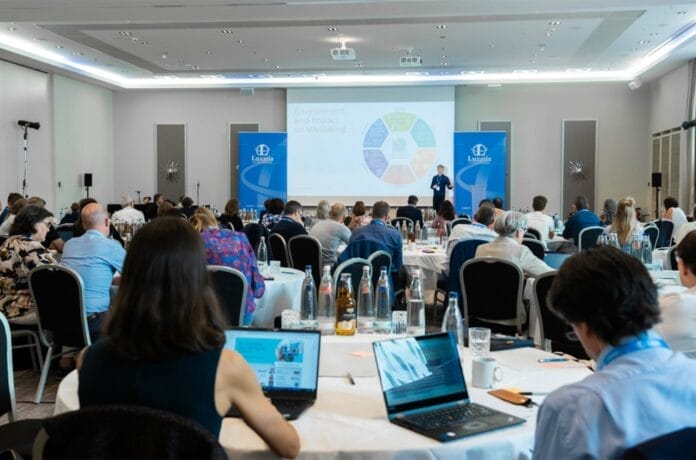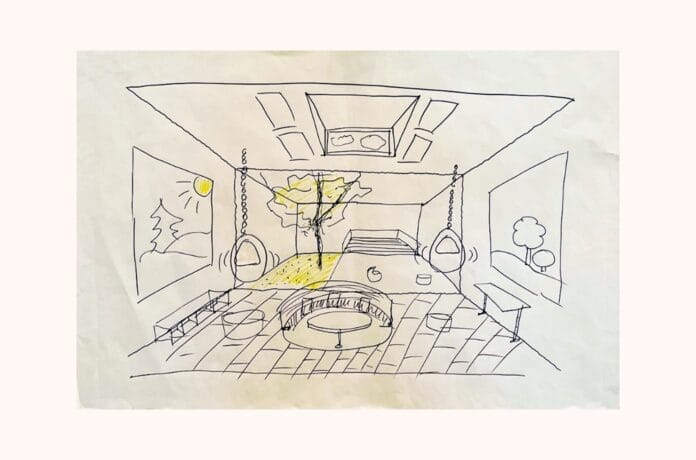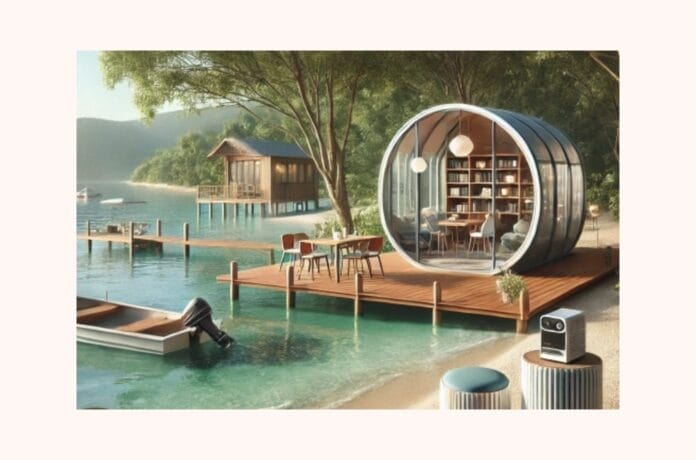
In his latest article, Chair and Head of Design at HLM Architects, Philip Watson shares his recent experience of facilitating a workshop at the 9th Innovative Learning Spaces Summit, held in Berlin in September 2024, titled “The Architecture of Happiness” exploring how the built environment impacts human health and wellbeing.
Ultimately, the workshop highlighted the immense potential of designing environments that align with our natural instincts for views, light, and nature which are often overlooked. When these elements are prioritised, spaces can be transformed into places where people thrive physically, mentally, and emotionally
At the 9th Innovative Learning Spaces Summit, held in Berlin in September 2024, I facilitated a workshop titled “The Architecture of Happiness” exploring how the built environment impacts human health and wellbeing. This session shed light on the importance of designing spaces that foster not just functionality, but also happiness and effectiveness for their occupants. What was unusual about this workshop was that participants were asked to consider learning environments from a different perspective, focusing on their emotional responses rather than purely on their functional needs.
The workshop began with an introduction to the role of the built environment in determining our overall health. Citing research by the Institute for Clinical Systems Improvement1, it was highlighted that physical surroundings contribute to at least 10% of a person’s health status. In the workplace, this impact is especially significant. Research from the World Green Building Council2 shows that 90% of a business’s operating costs are linked to employee salaries and benefits. A 10% improvement in employee wellbeing could thus lead to a marked increase in business performance, productivity, and success.
One of the most pressing issues discussed was the sharp rise in mental health concerns, particularly among students. Data from the Office for Students3 revealed a sevenfold increase in students reporting mental health issues between 2012 and 2022. This underscored the urgent need for environments that promote wellbeing, particularly in educational spaces. Joining the dots of this research, it is clear that healthier, happier places can have a big impact on people’s health and performance.
The workshop also tackled a common criticism of architects. Quoting architect Herman Hertzberger, it was noted that “most of the time architects do not think about how people feel in their buildings.” This session sought to reverse that trend by focusing on uncovering what genuinely contributes to happiness in a space.



Participants were first asked to recall a moment when they felt particularly happy in a specific environment, their ‘happy place’. They then reflected on what aspects of that space contributed to their wellbeing. Working in groups, they categorized these insights into themes, which were presented and discussed with the wider group.
The most frequently referenced aspects were connected to nature. Natural light, views of the outdoors, access to greenery, and the presence of natural features were repeatedly identified as essential to a happy environment. These nature-centric elements accounted for more than half of the group’s primary needs for a happy environment based on the number of references to each aspect captured. Sound and comfort were the next two frequently referenced aspects. While there was alignment around the need for fresh air and warm temperatures, sound needs were divergent. Most referencing sound preferred a quiet environment, although a significant minority expressed a preference for music to be playing. This finding – and conflict – will be familiar to many operating in open plan workplace settings. Sund is a complex and divisive topic.
To reinforce these findings, additional research was presented, showing the positive effects of daylight, nature, air quality, having a view, and physical activity on health and wellbeing. An example was shared of the transformation of the Health Sciences Library at the University of Leeds, designed by HLM Architects, where attention to these wellbeing-focused elements was transforming an uninspiring space into a desirable and effective learning environment.
Delegates were then tasked with collaboratively designing a learning space that incorporated the “ingredients” of a happy environment as identified by them earlier in the workshop. There were 17 groups with an average makeup of four people. Design solutions were sketched and annotated by each group and presented back to the wider audience. The results revealed a stark contrast between what people crave from the built environment in order to make them happy —nature, daylight, and a connection to the outdoors—and what architects and their clients typically prioritize, such as space, furniture and building systems. The workshop concluded by emphasizing that to design spaces that promote health, happiness, and high-functioning individuals, architects, designers and commissioning clients must focus less on defining spatial requirements and more on human connection to the natural world.

Ultimately, the workshop highlighted the immense potential of designing environments that align with our natural instincts for views, light, and nature which are often overlooked. When these elements are prioritised, spaces can be transformed into places where people thrive physically, mentally, and emotionally. Given the backdrop of increasing mental health challenges for students and staff in the workplace, it is essential that we shift our focus to what really makes an impact on people. We need to create an architecture of happiness.
References:
1 Source: Institute for Clinical Systems Improvement. Going Beyond Clinical Walls: Solving Complex Problems (2014)
2 Source: World Green Building Council. 2014. Health, Wellbeing and Productivity in Offices. http://www.worldgbc.org/activities/health-wellbeing-productivity-offices/
3 Office for Students, Student characteristics data: Population data
2Student Minds Survey 2022 (confidential survey)



